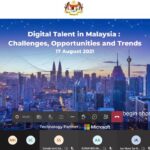Artificial intelligence (AI) was actually described as being popular once again because of its benefits that have become more obvious now. This statement was made at the sidelines of Huawei’s third annual user conference, Huawei Connect 2018 in Shanghai, where artificial intelligence is the focus theme this year.
AI benefits are more pronounced in current times, probably due to the progress of what you can call ‘adjacent technologies’ – big data and analytics (BDA) and Internet of Things (IoT) are two significant ones.
For instance, data has become more important than ever for machines to learn; they need data to learn to “think” as much as technically possible, like a human brain.
So, huge improvements in processing power and storage technologies, along with much reduced prices, have facilitated the rising trend of all of these technologies – BDA, IoT, AI and others like cloud computing and more.
Now, there seems to be a perfect storm of all the right factors to help push AI along. But a shortage of talent plagues the ecosystem; Wang Qian, the co-founder and head of commercial strategy at Maimai, a China-based social networking platform for employees had stated that in 2018 the AI industry in the country had a shortage of 5 million talents.
Maimai which can be described as ‘LinkedIn for China’, boasts 50 million registered users and has provided 9000 industrial talents for over 1000 companies with AI use cases.
One such company is Yitu, which uses AI intensively for its facial recognition technology.
Yitu’s Chief Innovation Officer, Hao Lv admitted, “We have a lot of pain finding the talent we want.”
Despite this, the company runs a 2- month AI bootcamp for fresh grads who make it through preliminary rounds of the hiring process. These AI camps are designed based on real-life AI use case experiences, and the PhD graduates don’t necessarily do well.
“Ninety-percent of our hires are fresh graduates,” Lv said, adding that there is a specific type of talent that Yitu looks for.
So, it’s not necessarily about how many years an individual puts into the STUDY of AI. In fact Lv also opined that the best place to grow AI talent is in the corporate environment, and not from the immediate education environment.
On top of that, AI talent needs to become more specialised in their skillsets – data labelling, data analysis, algorithm design, product engineering and so on – but still know the role they play in the overall scheme of things via complete contextual information.
Lv said, “They need to know the part they are working on. They have to be aware of the other parts with information like when is product being released, how to explain errors to users… across the pipeline, they have to know more than before.”
A Huawei Key Opinion Leader, Ronald Van Loon, also echoed this view when he shared that AI talents would work in teams. He said, “There is an end-to-end platform to build AI solutions with, that this team can work together on.”
How is Huawei coping?
Yitu has very specific requirements when it comes to their talents’ skills, something that is paying off for them as errors for their facial recognition technology is reducing at a consistent pace, every year. There is also talk of a speech recognition product being released end of 2018 for the Mandarin language.
With the announcement of Huawei’s full AI stack at Huawei Connect 2018, Huawei is very invested into growing its own use of artificial intelligence within its organisation.
Senior Management Consultant, Huang Wei Wei, said that Huawei’s two areas of focus are to make its products intelligent and to continuously improve internal management services to become automated and intelligent.
But with the shortage of AI-trained individuals in the industry, how does Huawei cope?
There has been sharing of pertinent experiences and observations about how AI talents would work/are working in their job environments, but how exactly does a company attract and retain the skills which it needs?
Here, Huang pointed out that growing human capital is more important than growing financial capital, and that Huawei is addressing their employees’ need for self-progress.
With an annual R&D budget of at least USD20 billon, Huawei has increased the 30-percent portion that is allocated for basic research and innovation, so as to attract more talent.
On top of that, they are also focused on establishing open centres of excellence (CoEs) that emphasise positive and diverse talent management, with the intention of working with talented professionals around the globe.
(This journalist is a guest of Huawei’s to their 3rd annual conference in Shanghai).








